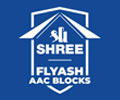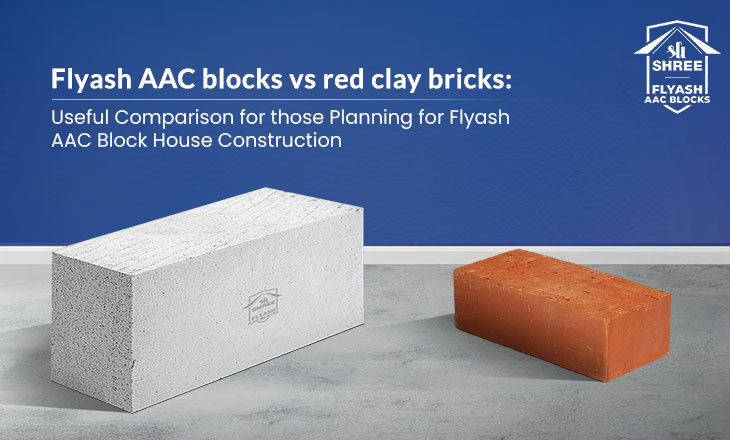Flyash Autoclaved Aerated Concrete (AAC) blocks are quickly becoming the preferred building material in the construction industry, replacing traditional red clay bricks. This trend is driven by the many advantages that Flyash AAC blocks offer over traditional building materials. If you’re planning to build a home, it’s important to understand the differences between Flyash AAC blocks and red clay bricks in order to make an informed decision. Here, we share some of the differences between red clay bricks and Flyash AAC blocks in house construction:
- Thermal insulation:
AAC blocks have exceptional thermal insulation properties. During the manufacturing process, millions of tiny air pockets are trapped within the blocks, creating a natural barrier against heat transfer. This characteristic allows Flyash AAC blocks to regulate indoor temperatures effectively, keeping your home cooler in the summer and warmer in the winter.
On a hot summer day, while the outside temperature is scorching, your Flyash AAC block home remains comfortably cool, thus reducing the need for air conditioners and lowering energy bills. Similarly, during the cold winter months, the excellent insulation of Flyash AAC blocks traps heat inside, providing a cosy and inviting atmosphere without having to raise the heater’s temperature frequently.
2. Acoustic insulation:
This is yet another property that gives Flyash AAC blocks an edge over red clay bricks. Flyash AAC blocks are known for their exceptional acoustic insulation properties. The air pockets present in these blocks can effectively absorb sound waves, which can help reduce the amount of noise entering your home. This means that if you live in a busy neighbourhood or along a bustling street, the Flyash AAC blocks can help create a quieter and more peaceful living environment for you and helping you unwind and relax without any disturbances from the outside world.
3. Strength:
These blocks are lightweight, yet they possess a higher strength than traditional red bricks, making them an excellent choice for construction. By using Flyash AAC blocks for walls, the overall structural load can be significantly reduced, as it requires lesser amounts of iron and concrete for the structure. In fact, using Flyash AAC blocks for walls can help reduce the weight of walls by up to 65%, which is an effective way to minimise the dead load and improve the overall structural efficiency of the building.
4. Fire resistance:
If you are looking for a reliable building material that can ensure the safety of your home and family, Flyash AAC blocks can be an excellent choice. These blocks are known for their high fire resistance, which means that in case of any unfortunate incidents, they can provide an extra layer of protection and allow you and your family some crucial time to evacuate.
5. Cost:
Flyash AAC blocks can also help reduce construction timelines considerably. Faster construction and reduced labour requirements can translate into cost savings. Also, the long-term energy efficiency of Flyash AAC-constructed buildings can result in huge savings in Air-conditioning and Heating costs.
6. Environment friendly:
Using AAC blocks in construction can significantly reduce water usage by up to 70%. This is because these blocks do not require curing at the time of construction. Compared to Red bricks, Flyash AAC blocks are much more environment friendly. While Red bricks are made from the fertile top soil, one of the key components in Flyash AAC blocks manufacturing is Flyash which is a waste product.
Looking for high-quality Flyash AAC blocks for the construction industry?
Explore our high-quality Flyash AAC blocks. Our AAC lightweight blocks are made of inorganic materials, which means that they are not susceptible to termite and other pest infestations. This is because pests cannot feed on inorganic materials, providing a long-lasting solution for your construction needs. Furthermore, our Flyash AAC blocks are engineered to provide superior protection to constructions during earthquakes, thanks to their excellent strength and flexibility. They can withstand the excess forces that occur during an earthquake, reducing the risk of structural damage and collapse. With our Flyash AAC blocks, you can have peace of mind knowing that your construction is built to withstand the toughest challenges.

